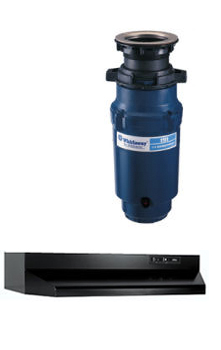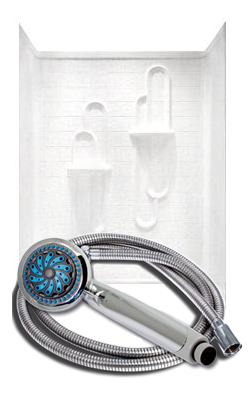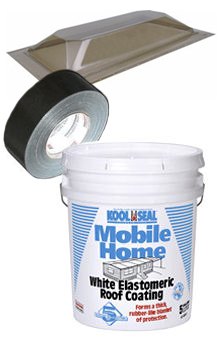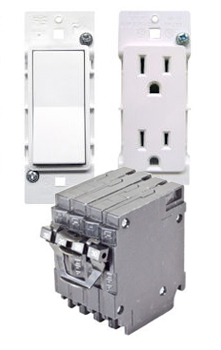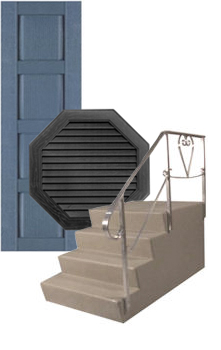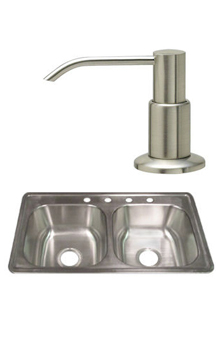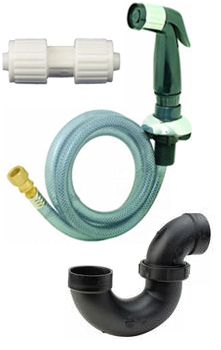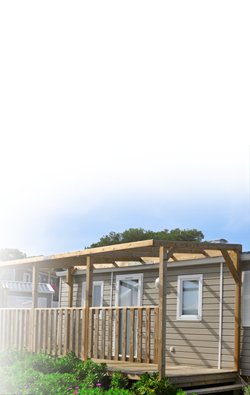
Just like traditional houses, mobile homes can benefit from having rain gutters. Though they might lack basements that are prone to flooding, they can still suffer damage from water. Gutters play a crucial role in managing rain and stormwater, guiding it away from the home’s structure by collecting rainwater from roofs, windows, and doors. This guide will explain why gutters are essential for mobile homes and how to install, replace, and repair them on your home and outbuildings.
The Role of Mobile Home Gutters
Mobile homes are not always equipped with gutters. This is often due to the additional width they would add, making transportation more challenging and potentially requiring extra permits.
While sealants and paints can offer some protection against water, redirecting water flow is the most effective strategy for preventing structural issues over time, as well as mold growth and leaks.
Protecting the Foundation
Many mobile homes today rest on cement slabs, sometimes with footers like concrete blocks or other types of piers to keep them elevated and dry. Allowing water to accumulate around and beneath your mobile home can lead to soil shifting, jeopardizing the stability of the footings. This could cause the house to lean or even slide off its footers, posing a safety risk.
Preserving Skirting
Skirting is often installed to cover a mobile home’s crawl space, enhancing its appearance. Even if you use vinyl, faux stone, or brick, keeping the lumber supports dry is essential to prevent rot. Prolonged exposure to pooling water can lead to mildew, mold, or deterioration behind the skirting, which can be time-consuming and costly to replace.
Mobile Home Gutter Basics
Gutters are essential for directing rainwater away from your mobile or manufactured home. They’re typically made of durable materials like aluminum or vinyl. Each gutter section should be slightly higher on one end, with a gentle slope toward the downspout end to ensure proper water flow.
Most gutters come in 10-foot lengths and can be joined together for longer runs using connectors and sealant. To avoid leaks, it’s crucial to ensure that the direction of water flow is correct when joining pieces.
Gutters come in various widths, typically 5 or 6 inches, depending on roof pitch and average rainfall. Steeper roofs and areas with high rainfall may require wider gutters and larger downspouts to handle the increased water flow.
Repair or Replace Your Mobile Home Gutters?

Before deciding on new gutters, examine your current ones for any signs of wear or damage. Check for signs of rust, corrosion, sagging, leaking joints, and clogged downspouts. Depending on the extent of the damage and the age of your gutters, you may need to consider whether repairing or replacing them is the best option. Sometimes, small leaks or loose bits can be sorted with simple repairs. Still, a complete replacement may be required if the damage is more serious.
Repairing Your Mobile Home Gutters
Gutters on mobile homes can get damaged by the weight of ice and snow, falling branches, or neglect. When leaves and debris build up in gutters, they get heavy and create blockages. This causes water to sit instead of flowing correctly, leading to leaks.
Inspecting and Repairing Your Gutters
If you need to replace part of your gutter system, inspect how it was put together. Pay attention to the direction the water should flow. Correct installation will show you how parts should overlap and help you figure out the order to take things apart.
When fitting new parts into an old system, check what type of hangers, gutter size, and style you need.
Disassembly and Preparing for Replacement
Before disassembling:
- Remove all debris to reduce the weight.
- Cut through the sealant with a utility knife and take out the fasteners. If a piece is difficult to remove, find what’s holding it instead of pulling harder to avoid damaging the house or falling off the ladder.
- After removing the damaged parts, inspect the fascia for rot or damage. If fastener holes have expanded, fill them with a wooden dowel and glue. Holes that won’t be reused should be filled with exterior wood filler and painted over.
Installing Mobile Home Gutters
Start by examining the area around your mobile home to find the best places to direct water away from the house. Downspouts are typically placed at the end of a gutter run or in an inside corner, but make sure the water from the roof doesn’t flow to a spot where it can seep back toward the home. Consider adding splash blocks, diffusers, underground piping, or water collection barrels to manage the water effectively.
Consider how to avoid erosion at the outlet of each downspout by planning where the water will land and taking steps to protect those areas. Plan ahead to prevent soil erosion by using appropriate measures such as splash blocks or diffusers.
Measuring
Accurate measurements are vital to determining the amount of guttering and accessories you’ll need. Measure the length of each side of your mobile home’s roof where you plan to install gutters, accounting for any corners or angles. Typically, gable ends don’t need gutters, but the sides of the gable roof will.
Add an extra inch to each end to allow for some overhang and ensure a proper fit. Remember to measure from the bottom of the fascia to the ground to determine the length of the downspouts.
Installing Mobile Home Gutters
Before starting the installation, gather all the necessary tools and materials. You’ll need:
- Pencil or marker
- Tape measure
- Level
- Hacksaw or metal cutting tool like an angle grinder with a cutoff wheel
- Power drill or impact driver
- Drill bits
- Driver bits
- Pop rivet gun, if using rivets
- Hammer
- Pliers
- Metal snips
- Crimpers
- Ladder
Now that you’ve prepped and planned, it’s time to install your new mobile home gutters. Follow these steps for a smooth installation:
Mark Lines for Installation
- Use a level to mark a line about 1 to 1 1/2 inches below the roof edge.
- If you have a drip edge, the gutter should go behind it.
- Snap a chalk line from a high point, sloping down 1/4 inch every 10 feet towards the downspout.
- Double-check the lines with a level.
Assemble Pieces and Install Hangers
- Assemble gutter sections on the ground first.
- Attach brackets or hangers to the roof rim.
- Drill holes for screws or spikes.
- Attach end caps, downspout adapters, and corner pieces.
- Cut openings for downspouts and seal joints with sealant and screws.
Install Gutters
- Get a helper to hold one end of the gutter.
- Align the top of the gutter with the chalk line.
- Attach brackets to the fascia, ideally into rafter tails, for extra support.
Install Downspouts
- Attach an elbow to the downspout adapter and hold another elbow against the house.
- Measure and cut a piece of straight downspout to fit between the elbows.
- Attach the pieces and measure the length to the ground.
- Assemble and install downspout parts using screws and brackets.
Connect to the Ground System and Test
- Connect downspouts to a ground system, water barrel, or use an elbow and extension to direct water away from the house.
- Use a splash block if water exits directly onto the ground.
- Test the system with a hose, checking for leaks and fixing them as needed.
Protect Your Mobile Home with Rain Gutters

By following these steps, you can confidently install or replace gutters on your mobile home. This provides essential protection against water damage and helps maintain the safety of your home. Always prioritize safety and pay close attention to details during the process. If you encounter any challenges or feel uncertain, don’t hesitate to seek guidance from a professional. By ensuring proper installation and regular maintenance, your gutters will safeguard your mobile home for years to come.
If you need assistance with your mobile home gutter installation, visit Mobile Home Parts Store today for the parts and supplies you need.
Tags: gutter, gutters, manufacture home, mobile home, mobile home gutters


